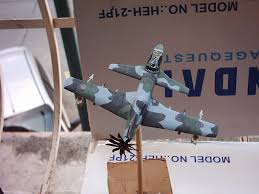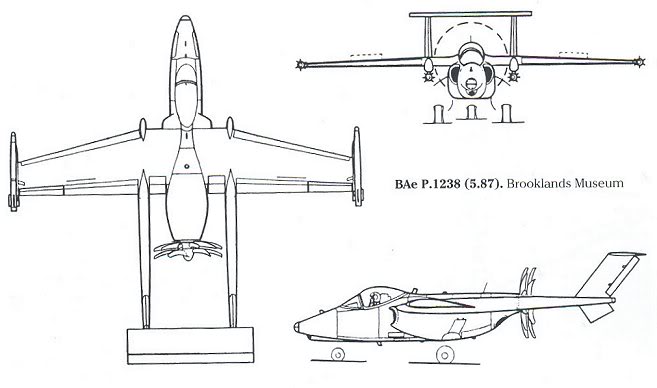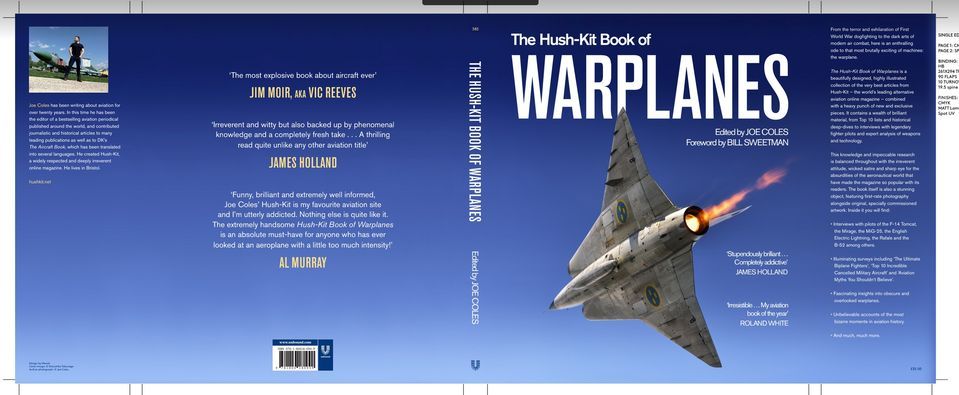‘Havoc’ killer: An insider describes Britain’s cancelled Small Agile Battlefield Aircraft

Geoff Richards was an aerodynamicist at BAe Kingston. Here he details more about the Small Agile Battlefield Aircraft.
With the Soviet Mi-28 Havoc attack helicopter under development, the BAe Kingston Future Projects team began to look for ways to counter this new threat. The study was dubbed SABA, for Small Agile Battlefield Aircraft, and aimed to develop a vehicle that could out-manoeuvre and destroy helicopters like the Havoc and also provide combat air support to forces on the ground by attacking enemy armour and supply vehicles. It was to operate in all weathers, day and night, from dirt fields and have good loiter time and a high-subsonic maximum speed so as to reach wherever needed as quickly as possible. Several configurations were studied, including one with a pusher propeller and a twin-boom tail layout and another a tailless jet with a forward-swept wing and a weapons turret under the fuselage.  Bringing in a requirement to carry as many as six AIM-132 (ASRAAM) air-to-air missiles as well as a gun helped to narrow down the choice of wing planform to a conventional minimal sweep one with enough span to fit the missiles under the wing. This requirement was a response to the suggestion that Soviet helicopters would operate in groups rather than singly.
Bringing in a requirement to carry as many as six AIM-132 (ASRAAM) air-to-air missiles as well as a gun helped to narrow down the choice of wing planform to a conventional minimal sweep one with enough span to fit the missiles under the wing. This requirement was a response to the suggestion that Soviet helicopters would operate in groups rather than singly.

Two configurations emerged as favourites. The P.1233-1 had a canard layout, a wing swept slightly forward and an unducted fan pusher propeller system powered by a modified T-55 engine. It also featured a dorsal air intake for the engine, dorsal and ventral fins and a rudder mounted under the nose.
The P.1234-2 was a more conventional ALF-502 turbofan-powered aircraft with twin fins and side-mounted intakes forward of the wing, like the Hawk. It was seen as a reserve should the new propulsion system of the P.1233-1 prove impractical. Both configurations included full-span flaperons for manoeuvrability and good short-field performance, an infra-red seeker and laser ranger targeting sensor in the nose and a conventional tricycle undercarriage. 

As the name implied, both were small, with a span of 11 m and maximum take-off weight of five or six tonnes. The small size helped survivability, giving low optical and radar signatures. The P.1233-1 also had a low infra-red signature, helped by mixing cold air into the engine exhaust. The main line departments at Kingston were called in to look into various aspects in more detail and this is where I came in as one of a small team to do a detailed wing design. The other two members, Jack Wedderspoon and Ian Cairns, both came from BAe Weybridge, bringing their experience of the Airbus A320 wing design.

Credit: British Cancelled Projects
We applied our respective design tools to the project, including CFD methods, and showed that both configurations were able to achieve the design agility target of a 180° turn in five seconds with a 150 m radius. SABA was publicly announced in late 1987, but although it reportedly attracted a good deal of enthusiasm from the military, government funding was not forthcoming.
 There was a later version, the turbofan P.1239 with radar-stealth features and an unusual central weapons bay holding vertically-launched missiles, but the approaching end of the Cold War provided the final blow to SABA prospects. As with so many projects on my CV, it failed to leave the paper stage.
There was a later version, the turbofan P.1239 with radar-stealth features and an unusual central weapons bay holding vertically-launched missiles, but the approaching end of the Cold War provided the final blow to SABA prospects. As with so many projects on my CV, it failed to leave the paper stage.
‘I absolutely love this book. Seriously well-informed, seriously funny, authoritative and full of passion for its subject. No one writes about aviation like Joe Coles. We’re lucky to have him. The Hush-Kit Book of Warplanes is my aviation book of the year.’
– Rowland White
Convinced? Order your copy of our book here
From the cocaine, blood and flying scarves of World War One dogfighting to the dark arts of modern air combat, here is an enthralling ode to these brutally exciting killing machines.
The Hush-Kit Book of Warplanes is a beautifully designed, highly visual, collection of the best articles from the fascinating world of military aviation –hand-picked from the highly acclaimed Hush-kit online magazine (and mixed with a heavy punch of new exclusive material). It is packed with a feast of material, ranging from interviews with fighter pilots (including the English Electric Lightning, stealthy F-35B and Mach 3 MiG-25 ‘Foxbat’), to wicked satire, expert historical analysis, top 10s and all manner of things aeronautical, from the site described as
The solid well-researched information about aeroplanes is brilliantly combined with an irreverent attitude and real insight into the dangerous romantic world of combat aircraft.


9 comments